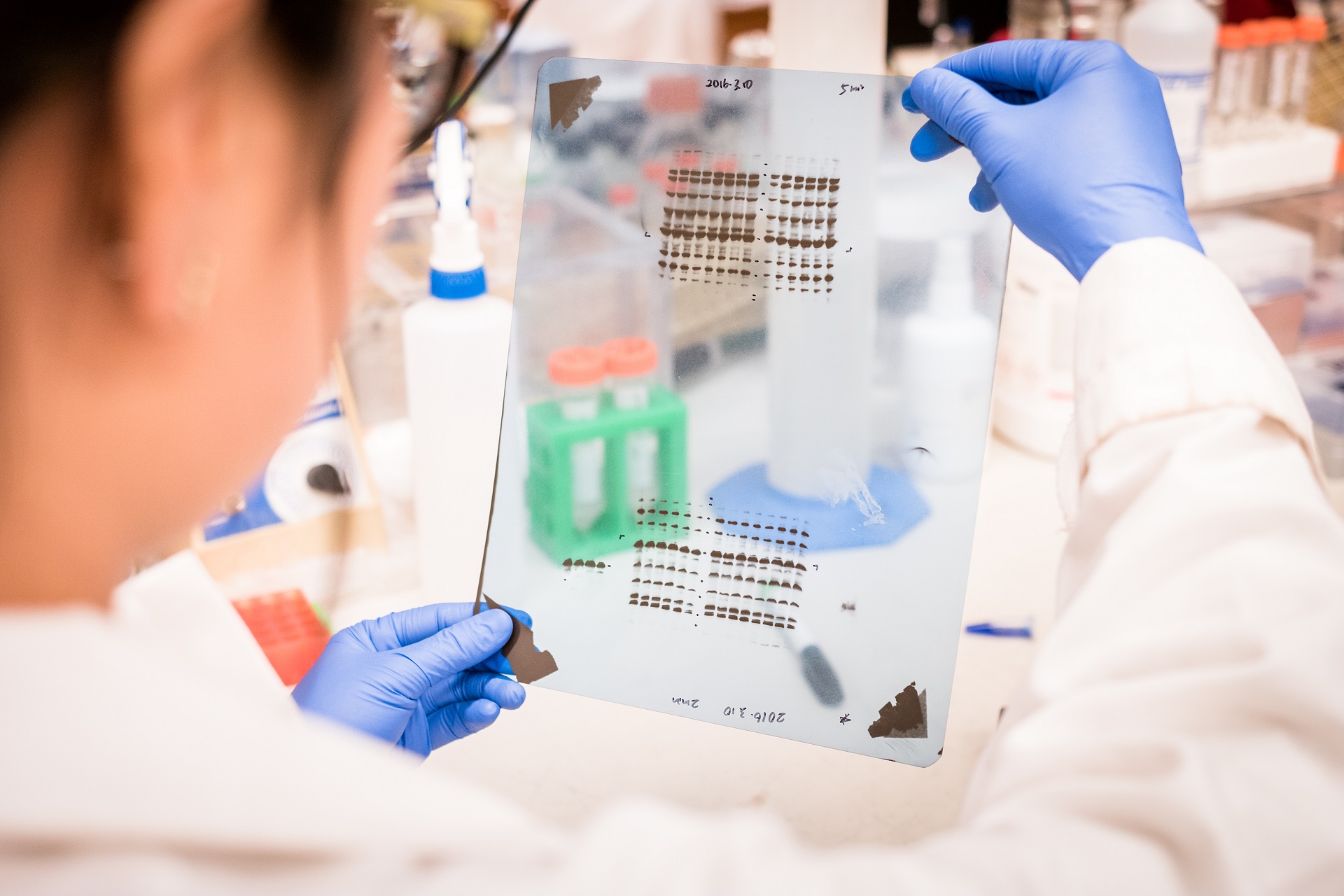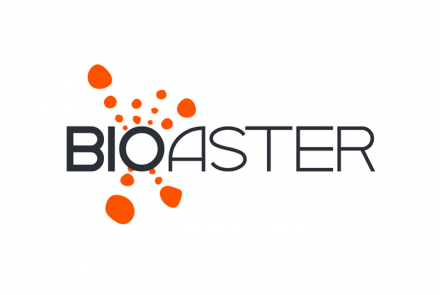


Location
France

Activity area
Pharma & Biotech
Project Management Tool at the Heart of Healthcare Research
BIOASTER researchers work on cutting-edge, interdisciplinary microbiology and infectious disease projects. Their sophisticated PMO is built on Sciforma’s PPM.
BIOASTER is a prestigious French Technological Research Institute (TRI). Created in 2012, it is based on a new model of delivering technological innovation in microbiology and infectious diseases. The mission is to carry out ambitious and innovative collaborative projects, with and for public and private partners, to the benefit of patients. Seven interconnected technology units serve four programs: diagnostics, vaccines, antimicrobials and microbiota. About 50 collaborative projects are hosted at its state-of-the-art facilities in Lyon and Paris. Partners include public and private institutes, industrial companies, SMEs and academia.
Carol Leroy leads the Project Management Organization (PMO). A highly experienced and expert project manager, she oversees a department that is a key actor for each project, capable of establishing links and space for high-quality dialogue that is easy to access. Business developers and scientists work in pairs to evaluate potential and ongoing projects. Equipment, materials and skills are shared across projects.
A PMO With a Mission
The PMO is deeply implicated in the complete life cycle of all Bioaster projects. Each project has a project manager who contributes to the operation of the project, with the aim of guaranteeing its completion and optimizing collaboration during the development and implementation stages.
The PMO acts as an intermediary between the various stakeholders and Bioaster. The organization benefits from:
- An experienced and qualified team, certified in the PRINCE2 methodology standard.
- A common frame of reference consisting of best practices and appropriate methods for budgeting, scheduling, quality assurance, traceability, conformity of deliverables and reporting.
- A secure website for each project to facilitate collaborative work and communication between stakeholders.
Requirements Clearly Specified
Upon joining Bioaster in 2013 (from Sanofi, a Bioaster founder and one of the top five pharmaceutical companies worldwide) Carole Leroy drew up specifications that would be used to identify a project and portfolio management (PPM) solution.
The PPM tool would be used throughout multiple phases, beginning with the evaluation and selection of projects. As such it would need to cover:
- idea introduction
- valorization
- partner identification and selection
- business case development (objectives, risks and opportunities)
- maturation: detailed elaboration of activities, scientific considerations, budget, financial model, intellectual property, etc.
- GO / NO GO
- launch
- execution
Sciforma: the Right Solution
“Sciforma was the tool that best suited our needs,” says Leroy. Sciforma was an excellent match in terms of scope, configuration and customization, sophistication and budget.
The relationship between Bioaster and Sciforma was also a key factor. The Sciforma consultant’s level of expertise on the specificities of innovation projects facilitated the implementation and support. “We understood each other very quickly!” remarks Leroy.
Robust Results
Sciforma is now the centralized tool for project and portfolio management, used to monitor all phases of planning, progress and budgets. It is also used to monitor scientific resources when evaluating the operational feasibility of proposed projects.
In addition to fulfilling all the requirements specified by Leroy, tasks Sciforma also covers include:
- workflow modeling during the final planning phases and project execution.
- tracking internal resources and analyzing time usage to compare assignments.
- budget management, including distribution and consolidation of resources across portfolios.
- incorporation of partners costs, so that real final project costs are understood and reported.
Clear Benefits
Acceptance.
Leroy conducted a survey of Bioaster project managers after six months of using the Sciforma solution, and found very high acceptance levels. A follow-up survey at the end of the first year produced even more impressive results: all the managers were enthusiastic about the added value of the Sciforma solution. They saw concretely the quality of the data, and how it was consolidated and used. They now use data generated by Sciforma in their own presentations, and understand how it is used by management in decision making. “For me, that’s the real success: the fact that people are really using it is fundamental,” explains Leroy.
Reporting.
Because project budgets are built directly into the Sciforma solution, Bioaster has witnessed very concrete savings in terms of reporting time. “In one click, Sciforma shows us the annual budgetary distribution for a portfolio of projects over several years,” says Leroy.
Communication. Collaboration.
While communication within projects is always important, at Bioaster it is crucial. Collaborative projects often federate geographically dispersed academic and industrial partners. Those partners might not share the same stakes nor the same constraints. The project managers therefore have a key role in coordination and centralization. Sciforma allows them to share reliable data quickly, which allows more time for analysis and communication.
Team management.
Data generated in the Sciforma solution is used for resource allocation and management, prioritization of projects and capacity planning. There are seven technology units (biological collections & microbiology; genomics & transcriptomics; immunomonitoring; expression systems & proteins engineering; pre-clinical models & imaging; data management & analysis; and metabolomics & proteomics) that intervene transversally on all projects. The predictive allocation of resources allows Bioaster to undertake accurate capacity planning, prioritize activities and projects, and recruit personnel when needed.
Resource allocation.
The Sciforma solution is used for resource allocation at three levels:
- Daily/operational.
- Globally at the corporate level to define capacity for new projects.
- To identify trends in terms of skills, types of partners required, and points at which partners should be brought in.
Flexibility.
In a next phase, Leroy wants to evolve the way Bioaster uses the Sciforma tool for capacity management, adapting it to the specific needs of each unit. The flexibility of the Sciforma solution will then enable them to leverage time tracking data in comparing estimates and resource usage.
Adding Value Together
Bioaster’s approach to innovation represents a new model in microbiology. As the project base continues to expand, the goal is that multidisciplinarity will facilitate the emergence of new transversal projects and the discovery of new technology solutions to global health issues.
In the quest for new synergies, Bioaster’s collaborative and partner-based model demands agility. The Sciforma solution is key to delivering a rigorous yet agile process, which ensures creativity and flawless operational quality. Perfectly adapted to Bioaster’s matrix organization and project mode of working, the Sciforma solution is the central tool that enables project managers to promote accountability and autonomy, and identify opportunities for synergies. Innovation through collaboration is a simple goal, but is extremely complex to execute. With the Sciforma solution tightly integrated into its project management process, Bioaster and partners are finding new ways to solve some of today’s most pressing global health issues.





